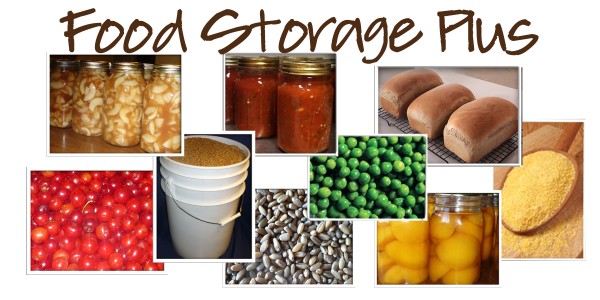It can be stressful to consider preparing for an uncertain future. We can’t be sure what will come in the years ahead but that does not mean that we can’t do anything about it. One of the most intimidating scenarios that could potentially confront us (and considering recent natural disasters, it isn’t too far-fetched) is the loss of electricity for an extended period of time. Most of us are dependent on electricity for both the storage and preparation of most of our daily meals so imagining what we’d do without refrigerators, ovens or microwaves is probably not a pleasant thought. Although no amount of preparation can totally reverse what would undoubtedly be a large inconvenience, taking one key step can help you avoid any reason to panic, even in a catastrophic situation. That step is food storage.
Food Storage is an Investment
Building up a good store of emergency food requires some investment, both in terms of time and money, but it is well worth the effort. If disaster strikes you will immediately regret the decision not to acquire food storage and the peace of mind it brings now makes this tip a no brainer. Plus, if done correctly, building food storage is quite simple, even if you are financially challenged or feel you don’t have time to devote to the endeavor.
You will want to begin with a food storage plan before you even beginning purchasing any food or water. Calculate how much food storage you will need for you and your family by using any of a number of free food storage calculators online. Ideally it is recommended that each family has a full year supply of food and water but that might not be feasible (especially for water, which requires more room to store) so set out a goal that is achievable in your specific circumstance. Many people are not in the financial situation to purchase a full supply of food storage all at once. If that applies to you then set plans to include a small amount from your monthly budget in order to build your food storage gradually.
Water is Your First Priority
Your first priority should be water because it is our most basic necessity. As mentioned, holding a year supply of water is not possible for many people but you should work to build up to at least a two week supply for your entire family. Experts suggest one gallon of water per person per day so a family of three, for example, would need 42 gallons of water to form their two week supply.
After you have planned for your water needs, your next priority should be building a supply of food that will provide for a balanced diet. Plan to include a range of foods from the major food groups: grains, fruits, vegetables, meats, and legumes. All of these foods can be found in bulk and it is becoming increasingly easy to find them prepared and packaged specifically for food storage purposes. Dry packed meats, canned/preserved fruits, and powdered dairy products are just a few examples of non-perishable foods that can be safely stored for years without refrigeration.
What Comes After Water and Food?
Many of these foods can be eaten straight from the container or are fully prepared simply by mixing in water. Other foods will require, or at least would taste better, if cooked. If you use a gas burning stove you will want to make sure to keep extra fuel safely stored and to have a good supply of matches. If you use an electric stove then it would be a good idea to purchase a small gas powered stove (there are many models made for camping that are high functioning and relatively inexpensive) so that you can still cook, even if the power is out.
ABOUT THE AUTHOR: Jerry Harp is a freelance writer and expert in emergency food preparedness and food storage.

